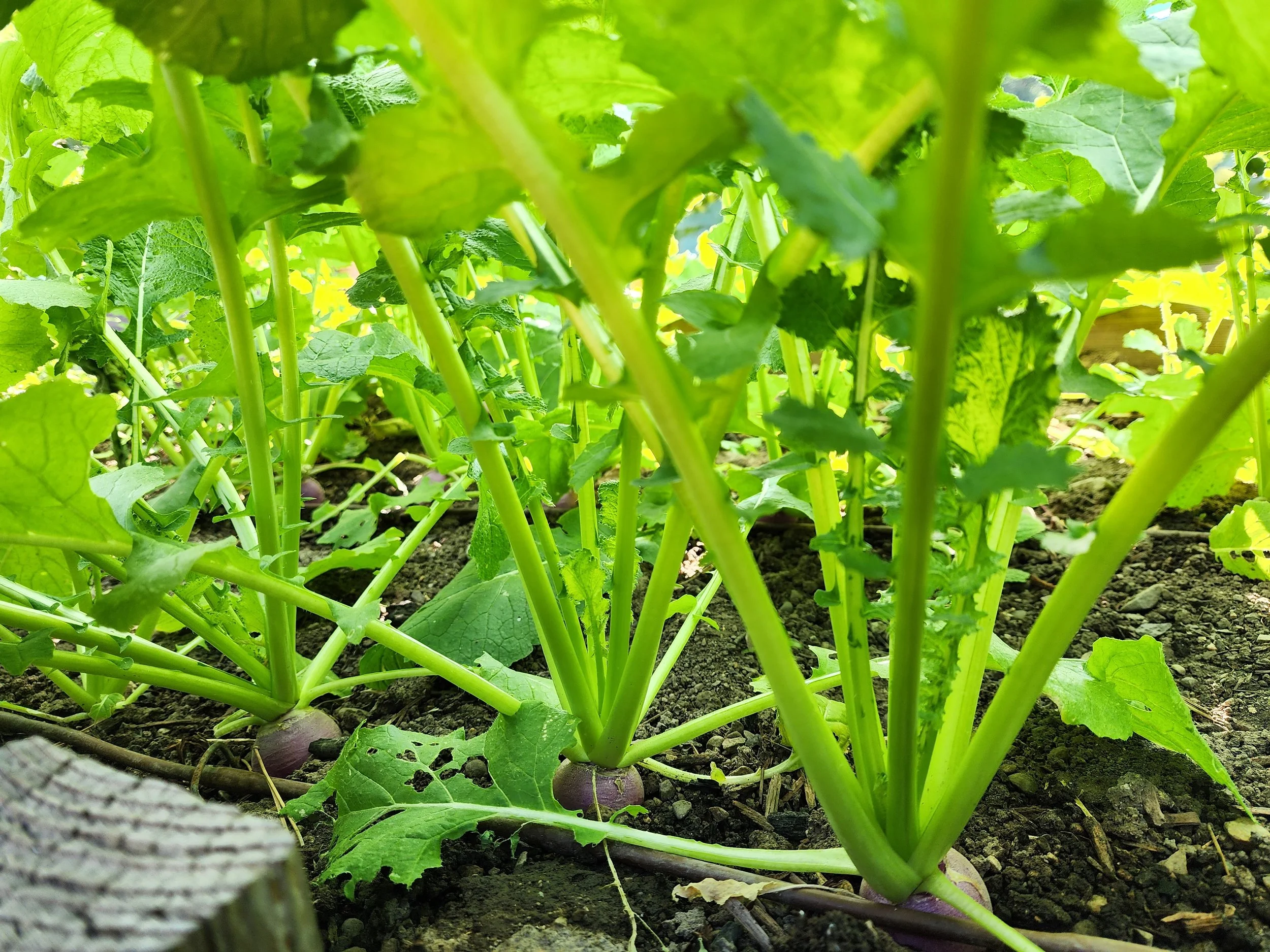4 Crops for Fall Gardening
As we bask in the sun these last few weeks of summer, some of us wish that we could enjoy our veggies and fruits further into the winter season. The bad news is that when the first frost comes, tomatoes and peppers will be the first to go. The good news is that dark leafy greens and some root vegetables will thrive! Our community gardens are quickly approaching the winterizing date of October 23rd, but that doesn’t mean that we have to stop growing. The heat-loving plants need to be pulled and weeds need to be cleaned up, however, the cold-loving plants can live out their lives into winter for as long as they like! Here are a few vegetables that can be started now so they can sustain us into soup weather.
Kale
Just like others in the Brassicaceae family (ie. broccoli, cauliflower, and cabbage), kale thrives (and even gets sweeter) when the temperature gets colder. Kale will still grow in the summer, but the leaves get a little tougher and more bitter especially in the heat we’ve experienced this past summer. The best time to plant kale for a fall crop in our zone is between 6 and 8 weeks before the first frost.
Brussels Sprouts
Much like their sibling kale, Brussels sprouts love cooler weather. The best times to plant Brussels sprouts, in our zone, is between 6 and 8 weeks before the first frost for a fall maturity. I’ve read that once Brussels fully mature, they will keep on the stalks throughout winter if they are covered completely by mulch. That way, when I want to make a delicious roasted Brussels sprouts, garlic, and parmesan dish I can go out to the garden and pick the lovely green gems.
Radishes/Turnips
Turnips and Radishes, two other members of the Brassicaceae family, are wonderful additions to plant between 6 and 8 weeks before the first frost in Missoula. They both germinate pretty quickly from seed in cooler temperatures and are great additions to a nice fall salad or roasted as a lovely, hardy side dish. A plus with turnips are their leafy tops. Turnip greens have a milder flavor compared to collard greens and kale. A great recipe that I have used them in is as a substitute for spinach in Saag Paneer. Radish tops can be used for a peppery addition to any recipe that calls for “greens.” However, due to their leaves being a little prickly, I cook them rather than eating them raw. The choice is yours!
Garlic
Garlic is a great crop to plant in the fall, however, we will not be able to harvest until summer the following year. The best time to place a clove of garlic into the ground is during the fall season. As with most plant selection, choose an individual clove from a head of local garlic that tastes the best to you, preferably the biggest one in the bulb. The papery membrane needs to be fully intact around the clove to ensure it doesn’t rot before it gets the chance to grow. Once the clove has been tucked in for the winter, place mulch about 6 inches deep over the garlic. Click the ‘Learn More‘ button below for more information and steps for planting garlic.
A special thanks to Dave Victor (PEAS Farm Director), Peter Wilson (PEAS Farm Field Manager), Maggie Gammons (PEAS Farm Caretaker), and Caroline Stephens (PEAS Farm Lecturer) for allowing me to pick their brains on what they know about late summer and early fall planting!




